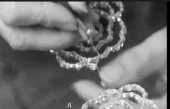RIPPONLEA GARDENS
The Ripponlea Estate was named after the wife of a local politician Sir Frederick Thomas Sargood. It provided a social setting for his influential guests and bountiful garden for his nine children yet despite the opulent setting that he placed himself within, he supported the factory worker by shortening their day and imposing wage awards.
In the pleasure garden the Sargood era is evoked by the staging of a range of performing arts events including opera, theatre, chamber music and outdoor activities. Culture Victoria
Today within the urban tangle of the traffic riddled roads that engulf the Elsternwick area there is a sanctuary where you can withdraw from the chaos and stroll down the paths of a botanical paradise. The garden explores the traditions of European landscaping with areas of French aristocratic order, Italian features and the avant-guard bend toward naturalism that softened the rigidity of control.
Sargood worked with his head gardener Adam Anderson to create a space rich with imported plants, an orchid and vegetable produce. William Sangster a landscape designer, that would create the Victorian Gardens, added his vision to the project, which included sweeping areas of lawn, a lake and an entry path lined with Oaks.

The fashion of the garden that was inspired by the movements of the time and morphed with each new owner is a gem of landscape history that has survived, despite the encroaching suburban sprawl and government acquisitions. What separates it from other public areas is that it was designed to be private and therefore there is an intimacy and charm that is unique.
The predominate aspect at the lake is a small bridge across the water, underlie with lily ponds, brush grass, towering vegetation and flowers it is as picturesque as Monet’s garden. There is also a cave under the waterfall, a small pergola on the waters edge and meandering paths , it re-creates the romantic inclinations of the Pre-Raphaelite movement that were blossoming in England during the 1880’s.

In 1910, Benjamin Nathan who established Maples, the furniture stores, took over the property, he introduced more native plants into the area, displaying a discernment to the Australian environment that his predecessors had ignored. When he died, his daughter Louisa (Lulu) took over in the 30’s.

Art-Deco hedonism that was in full swing, when Lulu took control of the property and brought in some modern appliances and ideals. Featuring a tennis court, swimming pool, boats and a stable of horses on the grounds, the parties of young heiresses would not have been lacking friends.
The grounds attract an assortment of birdlife and the duck society is in full force, providing endless entertainment, there is a resident kookaburra and in its ‘hey-day’ peacocks graced the lawns. People come to the property sporadically and blend into the environment, it invites the quiet visitor.

Currently the property is in the safe arm of the National Trust with the park open to the public for a small entry fee, the pool side party room is available for hire and hosts local weddings.There is a tea-room with an open fire on cold days and a small nursery to buy some of the specimen’s offshoot’s, including the apple trees. It’s the go-to place for escaping the city drone and being an heiress (heir) for the day.





























